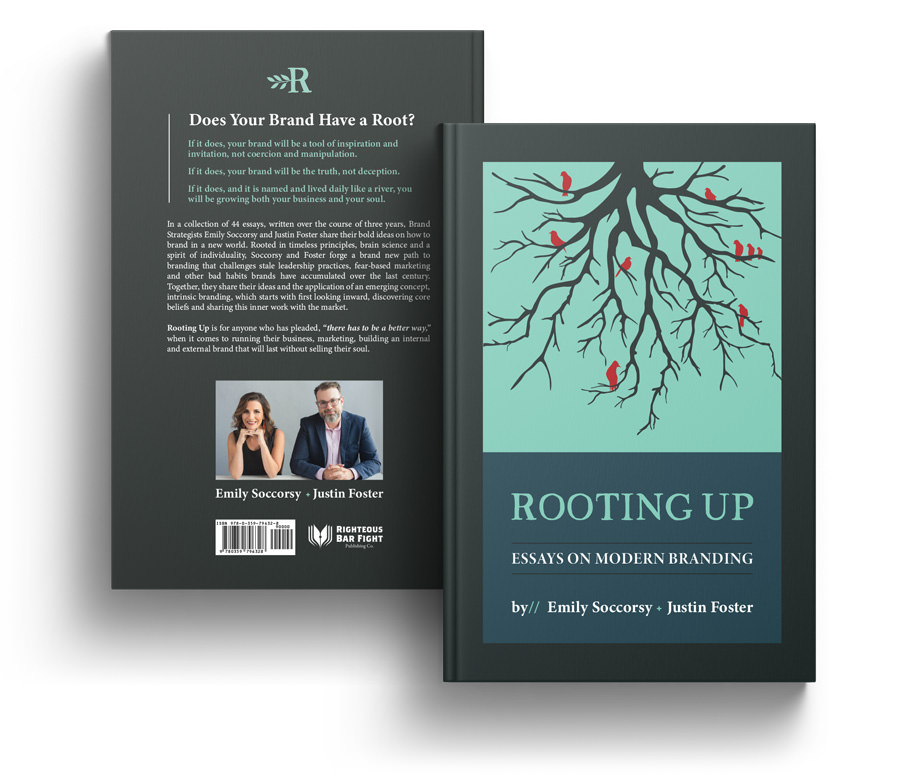Filed Under: Humanistic Marketing, Intrinsic Branding, Leadership
By Emily Soccorsy
How do we know if we have moved past a moment in our lives if we do not take time to envision what we will become?
How do we know if we’re graduating?
Early life and school, though constrictive at times and full of structures – does offer us built-in goals and milestones to measure toward: walking, riding a bike, learning a sport, completing a school or a grade or a degree.
But once the structures of our educational system fall away, when and where do we envision our progress and path?

It look me many years to understand that a visioning process would be helpful (and transformational) for me. Then it took me many more to find one that would resonate for me.
My reticence to envision was tangled up in fear, regret and sadness. I felt full of regret that the visions of my youth had yet to materialize. I had a sense of foolishness for even once having them when I had been so poor at making them come to life. And though there was so much in my life to be happy about, I was sad for all of the visions I now considered to be like my old childhood paper dolls, the once vibrant, now left behind, scraps of childhood wishes
My lack of desire and fear of visioning was perpetuated by the fact that I navigated some really difficult tragedies in my 20s and early 30s. In that space of survival and mental and emotional struggle, it felt nearly impossible to call in imagination. It felt frivolous and sometimes even detrimental to my delicate hold on my life. And, as a woman, a mother, a partner and caretaker, it was always more comfortable and more comforting to imagine for others.
One of the gifts of becoming an entrepreneur in 2011 was the need to start visioning.
Pretty quickly into my own endeavor, I realized I would have to chart the course, imagine the growth and mold the dream.
While this was terrifying for many moons, I eventually embraced that role.
Now, I know visioning feeds my soul.
I spend dedicated time visioning at least twice a year. I have regular visioning practices that are part of my meditation practice. And I don’t assign emotions like anxiety, regret, shame or sadness to my visions. I just allow them to be what my imagination, heart and my mind want to create.
When I work with my clients, I vision with, for and through them.
During our Root Sessions, we always begin with the delicate practice of teasing out, inviting in and welcoming their vision.
The vision is the fixed point on the horizon we all agree to navigate the brand toward. While plans and strategies come later, the vision you create for your life or business or brand really must suit you first. It must feel somehow deeply tied to your soul and to your mission.
Do you have a vision for your life? For your work? For your brand?
It’s a simple question not simply answered.
To begin moving toward vision, I have a few guides that I find helpful for me.
Congratulations, me!
First, begin by congratulating yourself. Recognize the strides you have made to be here. Call out the difficult moments, the scraped knees and hard-fought, slow victories. Thank yourself for all of your prior efforts to bring the you of today to this moment. This should lighten the mood and steer you away from beginning with all that hasn’t been accomplished yet.
Suspend disbelief
Second, suspend disbelief. All things are possible inside the village of your vision, particularly as you begin. Logical systems must stand down as you vision. If doubt or disbelief wants to butt in, kindly ask them to wait outside. Don’t turn your attention yet to how. Stay in what if. As you vision, the melody is “I wonder, I wander, I am curious.” And the refrain is “yesyesyesyesyes” and “hmmmmmm…”
Nicely nonlinear
Third, let this be nonlinear. The vision will ebb and flow behind and around time and space. Let it. Again, this is not a planning exercise. While it’s advantageous to set a time and place to begin visioning, make enough room for your vision to amble around inside your heart and mind a bit. Let it wander. Imagine walking out onto a huge range. Give yourself some time to generate or connect to the vision, then give it some more time to simmer inside of you and follow some stray paths along the way. When you return home, what is most true and vital will be waiting for you.
What we can see, we can create. I deeply believe this to be true.
If we do not set aside the pressures of the urgent everyday for the ephemeral someday, there may not be a future to create.
And life is too precious to miss that graduation moment.
